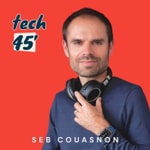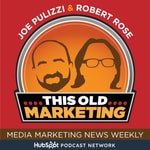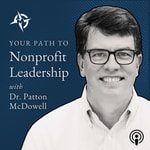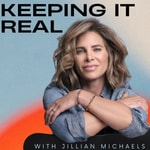Shoot to the Top – Details, episodes & analysis
Podcast details
Technical and general information from the podcast's RSS feed.

Shoot to the Top
Sam Hollis & Marcus Ahmad
Frequency: 1 episode/7d. Total Eps: 119

Recent rankings
Latest chart positions across Apple Podcasts and Spotify rankings.
Apple Podcasts
🇬🇧 Great Britain - marketing
27/07/2025#64🇬🇧 Great Britain - marketing
19/07/2025#81🇬🇧 Great Britain - marketing
11/07/2025#54🇬🇧 Great Britain - marketing
10/07/2025#74🇬🇧 Great Britain - marketing
26/06/2025#57🇬🇧 Great Britain - marketing
25/06/2025#82🇬🇧 Great Britain - marketing
09/06/2025#80🇬🇧 Great Britain - marketing
07/06/2025#81🇬🇧 Great Britain - marketing
11/04/2025#97🇬🇧 Great Britain - marketing
26/03/2025#44
Spotify
No recent rankings available
Shared links between episodes and podcasts
Links found in episode descriptions and other podcasts that share them.
See all- https://www.shopify.com
2729 shares
- https://www.canva.com/
1027 shares
- https://www.hubspot.com/
631 shares
- https://twitter.com/home
1556 shares
RSS feed quality and score
Technical evaluation of the podcast's RSS feed quality and structure.
See allScore global : 63%
Publication history
Monthly episode publishing history over the past years.
How do increase your revenue by using video in your photography business with guests Nathan Pidd and Mike Robertson
Season 2 · Episode 40
jeudi 17 octobre 2024 • Duration 28:57
Nathan Pidd and Mike Robertson are VIP Creative. Together they run a video and photography business in Hull. Nathan had been doing photography as long as he can remember. He met Mike through a mutual friend and Mike helped on Nathan’s first wedding. In the business they have now, Nathan heads the photography side and Mike heads the video side. After three years of running the business alongside full time jobs, they decided to run the business full time.
Nathan explains his training was through a fine art degree that then moved into lens media and really enjoyed using Photoshoot. After university he ended up opening up a print shop at the university and then also started teaching at the
university.
Sam asked how they managed with running a business after all of the focus on creativity at university. Mike says the accounts and marketing is something they have always struggled with. So their marketing does takes a back seat. They do outsource some things like accounts.
Mike says when they started out they thought they would be able to finish early and work three days a week. But now he finds he works much longer hours than he ever has done before, but he enjoys it. Nathan says he was scared to be a
photographer by himself, so having Mike alongside him make that move much easier for him. Nathan says it’s great as they both have different skills.
Sam asks if they have advice for others thinking of setting up a business as partners. Mike says they have creative differences and that can cause problems. You have to also make sure you get on really well as you will be tested on the way. Although you will have differences you have to agree on the core of the business. Mike also says think is this the person I can manage with when the going gets tough.
Marcus asks if they have a niche and they say no. They work with a variety of businesses across video and photography. With their time in the industry they have done a wide range of things. Mike thinks this helps to maintain their creativity. Nathan says they also enjoy the challenge of doing different things from one day to the next.
Marcus asks about their setup. Nathan says he is a “lighting
nut” and that’s the first thing he focusses in on set. They also use the lighting for their video work as well as the photography. They also work together, so most projects they do together as a team. On site they work together and tend
to have specific roles that they automatically get on with. They say their knowledge of sound and lighting means that the videos they produce have very high production values.
Sam asks how they persuade people to use them and not their phone to make videos. Mike says the client needs to appreciate what they do, so they see the value. Mike also says they need to do both. Take photos and videos on your phone, but then also have the higher quality professional photos and videos too.
You can find out more about the podcast on our website
and get the podcast delivered to your inbox every week here.
Using Models in your Work
Season 2 · Episode 39
jeudi 10 octobre 2024 • Duration 20:45
This show is about working with models but is also working
with all sorts of different people on a shoot.
How do you find a fashion model for a test?
A test is a situation where everyone is working together for
free to build images for their portfolio. It is a very typical way of starting the fashion world. Marcus says the first thing is what a fashion model looks like. Look at fashion magazines to get an idea for this. Marcus says that fashion models should look striking / unusual. Marcus says now there is a very positive change from everyone being very skinny to there being more body shapes seen in fashion. Although he says there is still a long way to go here.
A good place to go to find a model to do a test with is a local model agency and then you need to find the newest models on their books. The newer models will be the ones who also want images for their portfolio. Agencies may ask to see your portfolio before letting you shoot one of their models. This can be an issue if this is also your first step into the world of fashion photography. But don’t let this be a barrier to you, give it a try.
Street casting is another way to find a model. So approach people on the street who you think would be a great model. Having a portfolio to show as part of this is helpful.
There also online model agencies. Marcus thinks are not necessarily the best models for fashion shoots. But you can still approach them.
Sam says setting up this test means you have a group of people all starting out in fashion who can all help each other as a network.
Marcus now moves on to posing a model and this part of the podcast is also relevant to other areas of photography. Although he doesn’t like the word posing.
He has three ways to help get a model / subject to pose in a certain way. They are Mirroring, Role play, Observation
Mirroring
He got this idea from the photographer Richard Avedon. Basically you have to get “in tune” with the model and they will naturally mirror what you do without thinking about it. So if you cross your arms they do to.
Role Play
Marcus says he does this a lot in brand photography. Marcus suggests scenarios and then the subject acts them out
Observation
This is about looking deeply at the subject, spotting what
they do naturally, remembering it and asking them to do it again.
He says there are many other ways but Marcus thinks these are the most effective. Marcus says one of the most important things on a shoot with a model, or anyone, is the “vibe” in the studio. Music is a good way to create a vibe, both using music the model like, but also the music
can be used to effect the mood on the shoot.
Marcus’s final hint is that if you are going to put together fashion shoot make sure you know who it is going to be for as different magazines have different styles.
Using Google Ads in your Photography Business
Season 2 · Episode 30
jeudi 8 août 2024 • Duration 19:17
This episode is sponsored by Website for photographers. Website 4 photographers help photographers get more leads from their websites. You can get in touch here
info@website4photographers.co.uk
Why would we use Google Ads?
You get instant results. As soon as you press go you get visitors to your website. But it means you have keep paying to keep those visitors coming. It can also be complex to setup.
When should you use ads
Sam says the first thing you need to do is do some research before running ads.
1. You need to know your conversion rate (how many customers do you get for every enquiry).
2. You need to know the average amount of money you get from a customer
3. Find the ad costs for the ads you want to run. You need
to use keywords here and the SEO planning podcast talks about this in more detail.
You then need to work our the cost per click. The you need to know for every website visitors how many calls you get. You then need to know how many calls it takes to get a
customer. You need to use this to work out how much money you will need to spend to get one customer. That number needs to be low enough to make it worth you
paying this much for a customer.
You also set monthly ad budgets which Google breaks down into days. Once your daily ad allowance is spent Google will stop showing your ad for the rest of the day. Ads can work if the price is right, but it is also easy to lose money on ads.
Marcus said that people from Google Ads phone you to help
with your ads setup. But remember their main job is to persuade you to increase your ad spend.
Once you have done the maths and know the ad is worth running you need to think about the three parts of the ad.
1. The words
2. The ad
3. The destination you send them to
The key is that the words, the ads and the destinations must all match up. The keywords should relate to the ad which should relate to the landing page. The landing page needs to be 100% focussed on the ad. Sending people from ads to your home page is a really bad idea. If these 3 parts don’t all match then visitors won’t convert into leads and Google may not show your ad. It is best to make a different landing page for every ad that you run that is dedicated to match that ad.
Marcus comments that it’s easy to spend a lot on ads. Sam says it’s important to constantly evaluate how the ads are working for you. Give them a few months to bed in. Once they have settled in and they are not working at all turn them off. If they are working well great. If they are a bit borderline then it is time to tweak the ads and the landing page. But only ever change one thing at a time. Make a single change, evaluate the results, then make another change and do the same. Remember the changes could be to the ads, keywords or landing page. But always make one change at a time.
So remember get the flow from the words to the ads to the page and make sure it adds up financially.
Meet Meg McMillan, Branding Photographer and Educator
Season 2 · Episode 29
jeudi 1 août 2024 • Duration 28:25
Meg is from San Deago, our first guest from the US.
Meg is a brand photographer, and has worked with over 300 entrepreneurs. She always wanted to work in an area she had passion in. Twenty seven jobs later she started to work it out. While teaching English in Taiwan she bought a camera and started a travel blog. On her return to the US she decided she really loved photography and so started a business. She started doing all types of photography. Then one day someone asked her to do some branding photographs and this converted her to brand photographer.
That business changing brand shoot was seven years ago. At that time photography was still a part time job. So then she started going to networking groups and meeting more business owners.
Meg describes brand photography as bring broken down into brand photography and personal brand photography. Brand photography is for a product or business. While the personal brand is for the solo entrepreneur, one man band or family business. The personal branding is what Meg really likes doing. In this age of social media these branding photographs are so important for businesses.
Meg now works less, adds more value and charges higher prices which allows her to spend time with her toddlers. She enjoys the flexibility that a brand photographer can bring. She enjoys the creativity of brand photography. If you want to get into brand photography then first of all spend some time getting to know how it works. A client will often have a bigger budget than a personal client. But you need to ensure you let them know what value they will get from your work. Meg also says the planning side of a brand shoot is essential and a key part of the this type of work. This is about finding out about their personality, brand , business and the end use for the photos.
Getting in front of as many ideal clients is really important. It’s a numbers game. The more people you can get in front of the more clients and the better clients you will gain. This is a part of the business photographers don’t necessarily enjoy but it is vital for a thriving business.
Marcus asks what makes a branding photograph different from a portrait. Meg says it tells a story. You want to try and capture the essence of what a business is through the use of photography. Meg says that although we say the photography market is saturated, this is not unique. Many other industries are the same and businesses in those industries need photography to make them stand out from the crowd.
Marcus and Meg agree that in branding the coffee cup and computer and overused, although they have both used them. They say that you need to get more creative than this. How could a brand photographer go beyond this? Props, location and wardrobe can help and make the photos more unique and interesting.
Jamie Stewart, networking legend.
Season 2 · Episode 28
jeudi 25 juillet 2024 • Duration 32:04
Jamie runs Circle networks and he used to be a reluctant networker. Back in 2013 he had to go networking to find customers for his social media business. At the time most businesses were not on social media, so he had to go and find them. But he fell in love with networking and it took him on a long journey. Jamie says the business was providing social media for businesses that weren’t using it at all. It was mainly Twitter.
When Jamie started business he wanted to be able to do the school run. On that basis he never did breakfast networking. One of Jamie’s clients pestered him for weeks and then he eventually went and enjoyed it and got some business. When he started networking he was offered training, which he thought he didn’t need. Then Jamie eventually did some networking training. Using the training he moved from getting £18k of work in a year from networking to £88k a year.
Jamie says we have all experienced just going networking and pottering along, but few of us think of training. His business also involved getting video testimonials which he enjoyed doing. That got busy and took him all over the country, which wasn’t what he wanted to do. And people started to approach him for networking training, He eventually moved his business to doing that. He says it is around understanding what it is you really want.
Jamie says before networking, he thought carefully about who he wanted to work with. He decided he wanted to work with a franchisee. His plan was to do excellent work with one franchisee, get referred to others. This worked well and in the end he also ended up working for the head office. All from doing a little planning before going networking.
Marcus thinks most people are just “winging it” in networking rather than planning. Jamie also says what you would wear to networking should be the same as what you would wear to meet a dream client. He says for Zoom meetings many people don’t make any effort at all. He also talks about what people see on the background of your Zoom calls. Marcus has some lighting which shows exactly what he does. Marcus also says he has made Zoom backgrounds that were slide shows of his work and people loved it at the networking events.
Jamie’s top networking tips
1. Prepare. Don’t just jump from one call to another with no breaks and no planning.
2. Arrive early. You would never arrive late for an in person event so don’t online
3. Go networking with one thing in mind. It might be you are looking for support, a recommendation, an accountant or anything else, but go with one aim in mind. If you are going for referrals. Have one in mind and be crystal clear. Treat it like a marketing campaign. You could do it as simple as explain who your latest client is or your ideal client is. You want people in the room to be able to filter all the people they know down to one, who they will introduce them to.
4. Be proactive with referrals. Go out and find people to refer, don’t just refer people you happen to come across. Jamie says for example while speaking to people he asked them if they had business insurance and then when it needed renewing. If the renewals were coming up he would pass them on to a connection who sold insurance.
Jamie has a photographer he works with on quarterly shoots. He says his face is his personal logo. Using photographs of ourselves is not showing off, it’s personal branding. He also says that as he’s used more professional photos he has found his social media reach expand.
Most people though don’t know the value they would get from professional photos. It is therefore important that photographers explain what value they deliver with a photoshoot.
So while networking talk about your clients and then the follow up is really important. Jamie said he made a decision to pass more referrals than ever before. And as a result of that he has been passed more referrals than ever before.
Cropping Images for Social Media, Websites and more
Season 2 · Episode 23
jeudi 18 juillet 2024 • Duration 18:57
Marcus says the show was triggered by a client he had recently who wanted images cropped in a very specific way.
Back in the days of film Marcus says it was a lot simpler and to some photographers it was a badge of honour not to crop their images. There were of course a great deal of different film sized and ratios back then including:
35mm – which were a 2x3 ratio
6cmx6cm so a 1x1 ratio
6x7 ratio was also possible for magazine covers.
Large format 5x4 was also available
There also camera specifically for panoramic images that were a range of formats and sizes.
Back then once you had chosen your film that was about it. Now with websites and social media these is so more to think about and so many different sizes. And when shooting you need to think about what crop you will use at the end.
For example a website header might be a 2:1 ratio, quite cinematic, while an Instagram reel will be 16x9 in portrait mode, which is very challenging to shoot. Sam says when shooting for a website you need to remember that the images will be auto-croppped so it needs to cope with a range of crops. Marcus says when shooting a website banner think first about if there will be text over the image. If there will be ask for an overlay so you can work out where the text would go on the image. View finders allow you to have crop marks (like rule of thirds) and these can help you think about the final crop you will have.
There are lots of sizes needed for social. For example for a profile banner a really wide thin shot is needed. Because there is such a range of image sized needed it’s important to ask the client what the client is going to use the images for. It’s a great value add for the customers providing them with
pre-cropped images for different platforms and uses. Doing this also ensure that your images are shown in their best light when used.
Marcus loved the square Instagram photograph format, but
with the move to reels being more popular, then this is a move away from squares to 16x9 portrait. As he has said before this is a challenging format to shoot in.
When thinking about cropping you also need to think about file size. If you are going to heavily crop an image you need to ensure it is a large file size that can cope with the crop.
Marcus suggests another thing that can make you stand out from other photographers is making videos from still images and giving them to your client. Marcus suggests using Canva for this and Sam suggests using CapCut. Marcus says making gifs for clients is another thing you can do them.
Meet Jo Dufty, Mindset Coach
Season 2 · Episode 26
jeudi 11 juillet 2024 • Duration 25:45
Jo wants to help people who don’t want an average vision. She asks them if the level of effort they are putting in reflects in their bank balance, but for most people that is not the
case. Jo finds that most people don’t know how to sell or land business. Once she helps them with that they can afford her and move everything else forward. One of the things Jo shows people is that it doesn’t matter what you do, it’s how you present yourself that is important. And once they do that the work follows.
Jo says she helps people present themselves in the best possible way. But there is a problem. People can see her, and in many ways photography, as a luxury. So a photographer needs to show a potential customer what they are going to gain from the photography, and what losses will be avoided.
Marcus explains what she is saying follows a Japanese philosophy he follows Ikigai. It has four tenants. Jo has mentioned two of them. Getting paid for what you do and adding value.
Jo says if you don’t believe in yourself you are never going to get work. She also says the prices needed to reflect your value. And if you are very good at what you do, charge accordingly. The conversation then moved onto mindset and Jo says the key is that it is simple. But that doesn’t mean it is easy. The first step is self awareness. Be able to see the doubts and negativity in your mind. That awareness then flows onto to the changes being possible. They discuss the Jeff Olson book The Slight Edge that talks about this gradual change. In Marcus Galdwells Outliers he says you have to put 10,000 hours into something to become an expert. Jo says it is a journey and you need to enjoy that journey. Ask what a confident person would do and how would they behave. Jo says awareness and little and often changes are really key.
That self awareness and confidence is vital to the process of photography. Jo says it’s important that this inner confidence is important. And that the work on improving ourselves is vital every day. Not many people like their photograph being taken and so that confidence and calmness is essential.
Jo likens your self confidence to being on a perch. If you have self belief and self confidence then day to day issues won’t knock you off your perch. But if your confidence is not in place, you can easily be knocked off your perch.
Marcus brings up the idea of melancholia and getting creativity from the darker times. Jo says that everyone will go though these times but what’s vital is that when you go through this you are aware what is happening and being aware that “this too shall pass”. Working through it is more possible with strength and resilience.
Other book recommendations
Beyond positive thinking, Dr Robert Anthony
As a final thought Marcus brings up sods law, which he thinks he is effected by. Jo says here partly this is about letting go and saying what am I doing this day to make this day count.
Using Google Maps to get leads
Season 2 · Episode 25
jeudi 4 juillet 2024 • Duration 19:10
This episode is sponsored by Website for photographers. Website 4 photographers help photographers get more leads from their websites. You can get in touch here
info@website4photographers.co.uk
This week Sam is talking about using Google Business and
Google maps for your business. Google maps is great for photographers, as most photographers want local clients. Google maps is the app we all know where you can find your nearest hairdresser, or photographer. Google maps gets it's information from Google business, or Google my business as it used to be known.
Google business is a system that is free to use and easy to setup. It gives your business a pin on Google maps, information on Google maps and information about your business appears on the right hand side during a desktop Google search. For photographers that work all over the country Google maps isn’t that useful. But, for those wanting local clients it is very valuable and can get you a lot of local leads.
If you get your Google maps account setup correctly it can delivery a lot of leads.
Location
For most photographers the location for your business is
their house. For a few it is a studio, but most are home based. If your home is in a large urban area, like Marcus here in Bristol, then your location really helps as you have lots of potential leads nearby. If you live out in the sticks it is more challenging for Google maps to deliver good results for you. If your location is in the middle of no where one option is to pay for a local virtual address in a local urban area. You can often pay co-working spaces or accountants for a virtual address service.
Name
If your business name has photographer in the name that really helps. Fancy names are a nice idea in theory, but if your business has photographer, or something like brand
photographer in the name that will really help you getting found on maps.
Category
Google business gives you a choice primary and secondary categories and you need to think carefully before choosing these. If you are a general photographer then your main category is photographer. You can then add other sub-categories for the types of photography you offer. But if you are a wedding photographer you may want wedding photographer as your main category. The key is plan this
carefully. Also some types of photography, such as brand photography are not categories that exist.
Review
These are really important. Get customers to leave reviews for you on Google. This is very important for Google maps and SEO in general. Lots of reviews and recent reviews are really important. Keep pestering your customers to give them reviews. Do not simply ask once and forget about it. Keep asking until they leave you one. If you search for ‘photographers’ in your area in Google maps, most of the photographers there will have lots of reviews.
Services
This is important. Get all of your services onto Google business. List as many as you can. And for every service use all the space that is available in the description. You can break your services down into sub services to add more.
Photographs
Adding photographs in Google maps as a photographer is essential. Add as many as you like.
Description
You get to add a large description of your business. Use all the space you have available. Think carefully about what you say.
Posts
You can post on Google maps. It seems odd and gets almost no interaction. But, it means when people find you on Google maps they can see recent content from you. It also helps you getting found.
Look at your competition
Look at the other photographers locally, see what their Google business account is like. Then work on your to make it better than theirs
Google search
Remember your entry in Google maps will show up in a standard Google search as well as Google maps search.
Meet Business Expert, Zoe Wadsworth
jeudi 27 juin 2024 • Duration 29:21
Zoe runs Ask Zoe and calls herself a consultant with a difference. She focusses not just on your business, but also on marketing. So she educates customers on what to do, when and how to help you grow. Sam and Zoe met four or five years ago pre-Covid when Zoe ran Fab Events. This business was setup in 2016. Zoe grew the business with 4N, the networking group Sam and Zoe were involved with at the time. The name Fab came because people kept saying “Zoe you are Fab”. Even in this business she was doing marketing as well as events.
When Zoe started Fab events, she said she could do all events, which she realises now probably wasn’t the best idea. While Zoe was running lots of events she spent a lot of time working with event photographers. She says if you are at an event you will usually need more than one photographer. There is usually too much going on for one person to capture. You can be the main photographer in the room, but you will need other photographers at other places, such as arrivals. That doesn’t mean as a single photographer you can’t do events like these. It means you just will need to collaborate with other photographers.
The reason Zoe called the business Ask Zoe is that she has built and kept relationships over a long time and those people who she is connected to will always Ask Zoe. Covid brought big changes to Zoe’s business and from a business point of view she sees it as a blessing. It gave her a chance to stop and reflect on what she had been doing and what she wanted to do going forwards. During Covid, Zoe was busy analysing the news and working out what would happen next and what she needed to do. As Covid was building in early 2020 events were already being effected before the UK population. This was due to early restrictions on imports. At this stage Zoe decided the best thing for her to do was focus on online events management.
What happened during this time Zoe’s business was doing well while many in the industry were fading. And so Zoe’s connections were asking what she was doing. She had been using a 7 step consultancy strategy that she had been trained in at Hilton and at University, and was using this in her business. But many people were feeling overwhelmed during Covid, so she stripped it down to a 4 step process.
Zoe then found that her business was only 5% events and 95% marketing and consultancy. She then talked to a lot of people including Collette Evans who does her branding photography to Clare Froggett who does Zoe’s branding and she developed Ask Zoe. So most of what she does is marketing and brand consultancy.
Sam asks if there is some common things that photographers could do to improve their business. Zoe says it really depends on the business and Zoe always starts with a call to see what help people need. But business owners tend to feel overwhelmed in terms of what they need to do to get to the next level they want to reach.
Zoe has worked with a few photographers and tends to find that they are very creative and tend to focus on this creativity, rather than what they need to grow their business. Creative people tend to be a little introverted and their creativity is their output. Zoe talks about getting KPIs (key performance indicators) in place in your business. These are just goals, nothing complicated. But things you need to focus on to get the end result. This is related to the show on business planning. Sam and Zoe discuss the types of KPIs photographers may have. For example it might be to do three weddings a week in the peak season, but have a month off in winter. But other photographers may simply to just do one wedding a weekend. The key is it’s relevant for you and your business. Zoe says a business a plan should be like a story, have a beginning a middle and an end. The middle is how you make it happen and how you join the dots.
Your Photography Portfolio
Season 2 · Episode 23
jeudi 20 juin 2024 • Duration 18:33
This week Marcus talks about building a portfolio as a photographer. He breaks this down into three areas, photographs, pace and presentation.
Marcus starts by taking about Robert Frank and his book 'The Americans', that was published in 1960. He took photos and made what he called about a visual poem out of them. Marcus encourages you to look at the book and focus on
the fact that it is a series of images.
Sam asks why a photographer wants a portfolio. Marcus says there are two reasons. One is to get more work. The other is to present a body of work. Years ago a portfolio was leather bound and shown to people to show your work. Marcus still has some of these. Clearly now there are many more options. You could have pdfs, movies and more, but printed material still has it’s value. And printing out work and showing it to clients will make you stand out from the crowd. You can also make a slide show to go at the back of Zoom calls during networking meetings. Marcus thinks 20 to 30 images in a portfolio is about right. Less is more. Sam says that on websites photographers usually add far too many images.
When you are putting together a portfolio the beginning and the end are really key. They are the parts people remember. The middle is almost a filler. The beginning and end does not need to be your best shot. It may be more your most impactful or alternative to get attention. Tweaking portfolios for the viewer is also really important. Marcus says to look at your portfolio from the back forwards, remember some people flick through books this way (if it is physical).
Think about how the photographs are arranged. So colours for example, or work on themes. Working through a time frame can also work. The key is do not put them together randomly. Sam introduces the ides of adding humour in there and Marcus agrees this is a great idea.
Finally Marcus talks about pace. Allowing space and allowing your portfolio to breathe. Marcus gives examples of leaving blank pages or part pages.
Marcus explains that he offers online portfolio reviews that can be booked in via his website.









